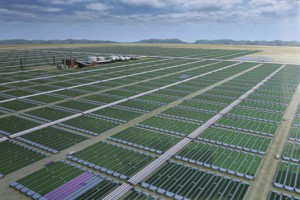لقد كان الماء – وسيظل – عاملًا رئيسيًا في تشكيل الحياة على الأرض. فهو محرك رئيسي لنهوض الحضارات وتفككها وتهجيرها. أظهر التاريخ أن الماء يمكن أن يكون سببًا للسلام والصراع بين الأمم. ومن منظور عملي أكثر، تقع المياه في قلب برامج التنمية الاجتماعية والاقتصادية والبيئية. تعد منطقة الشرق الأوسط وشمال إفريقيا المنطقة الأكثر ندرة في المياه في العالم، وهو وضع يتفاقم بسبب تغير المناخ وعدم الاستقرار السياسي. في حين أن تأثيرات هذا التحدي المائي المتضخم أضحت أكثر وضوحًا، فمن المتوقع أن تتسارع شدة ووتيرة التأثيرات غير المباشرة وغير المقاسة على الأمن والاستقرار في المنطقة في السنوات القادمة.
تتميز معظم الموارد المائية الموجودة في الشرق الأوسط بأنها عابرة للحدود، ويبدو التعاون المائي الشامل والمتكامل على المستوى الإقليمي وكأنه حلم بعيد المنال. علاوة على ذلك، من المتوقع أن تؤدي البؤر الساخنة للمياه الداخلية (على مستوى الدولة) والتي تستمر في النمو والتوسع بمعدل ينذر بالخطر، إلى إثارة الاضطرابات الاجتماعية وزيادة التحديات المتعلقة بالهجرات.
ومن الأمثلة على البلدان والمناطق التي أدت فيها النقاط الساخنة للمياه الداخلية إلى تضخيم التحديات السياسية والبشرية والإنمائية، اليمن والأردن والأراضي الفلسطينية والجزء الجنوبي من العراق.
المياه في منطقة الشرق الأوسط وشمال إفريقيا – حقائق وأرقام
- يعيش ما يقارب من 4.5٪ من سكان العالم في الشرق الأوسط ولكن لديهم 1٪ فقط من الموارد المائية المتوفرة في العالم.
- يعيش 60٪ من السكان في مناطق متأثرة بنقص المياه ويتم انتاج 71٪ من الناتج المحلي الإجمالي في هذه المناطق.
- تقع 12 دولة من أصل 17 دولة تعاني من الإجهاد المائي في العالم في منطقة الشرق الأوسط وشمال إفريقيا.
- تقع18 من أصل 22 دولة عربية تحت العتبة السنوية لندرة موارد المياه المتجددة البالغة 1000 متر مكعب للفرد ، و 13 دولة تحت عتبة ندرة المياه المطلقة البالغة 500 متر مكعب للفرد في السنة.
- يعيش 60٪ من سكانها حاليًا في مناطق تعاني من إجهاد مائي مرتفع، مقارنة بالمتوسط العالمي البالغ 35٪.
الجانب الإيجابي لندرة المياه
عندما يتم طرح مفهوم دبلوماسية المياه على الطاولة، فإن منطقة الشرق الأوسط وشمال إفريقيا تشكل منصة مثالية متعددة الأبعاد لتطبيق هذا المفهوم حيث أنها تحتضن العديد من الأمثلة على موارد المياه المشتركة. يمكن للتعاون في مجال المياه أن يجمع البلدان معًا، ويبني الجسور بين الناس، ويتجنب النزاعات.
يتمثل الجانب الإيجابي للنقص الحاد في المياه في منطقة الشرق الأوسط وشمال إفريقيا في الإمكانات اللانهائية لمزيد من الابتكار والتعاون من أجل المنَعة والتكيف ضمن مختلف القطاعات المستخدمة للمياه. تعترف منطقة الشرق الأوسط وشمال إفريقيا بأن العلاقة بين المياه والطاقة والغذاء هي العامل الرئيسي المحدد لرفاهية المنطقة وازدهارها. ولا يؤدي وباء COVID-19 إلا إلى تأكيد ذلك والتعجيل بالعمل على اتباع نهج أكثر تآزراً لمعالجة تحديات أمن الطاقة والمياه والأمن الغذائي.
عاد المورد الذي اعتبرته الحضارات القديمة مقدسًا مرة أخرى إلى المشهد مع مزيد من التركيز على قيمته كحق من حقوق الإنسان، وممكّن اقتصادي، وصانع سلام. على عكس العديد من أهداف التنمية الأخرى التي قد تختلف بين البلدان المنتجة للنفط والبلدان غير المنتجة للنفط، يبدو أن الأمن المائي هو العامل المشترك عبر منطقة الشرق الأوسط وشمال إفريقيا.
مما لا شك فيه أن مثل هذه الإمكانات للابتكار والتكيف تتطلب وجود العديد من العوامل الممكنة، بما في ذلك الإصلاحات على مستوى السياسات وتواؤمها، وإدارة البيانات والمعرفة، وتطوير القدرات، واستثمارات البنية التحتية، وإشراك القطاع الخاص، ومشاركة المجتمع المحلي. وفي خضم كل ذلك، تظل العلوم قاعدتنا الصلبة التي من شأنها أن تثري جميع الممكنات وأن تحفز العمل، على أمل أن يتم تبني وتعظيم نهج شمولي مترابط ومتعدد التخصصات.
ترجمته من الإنجليزية الى العربية
تقوى حاجي متفقد مصالح مالية بوزارة المالية والاقتصاد والاستثمار بتونس، متطوعة ومهتمة بالقضايا البيئية والتغير المناخي والتنمية المستدامة




































